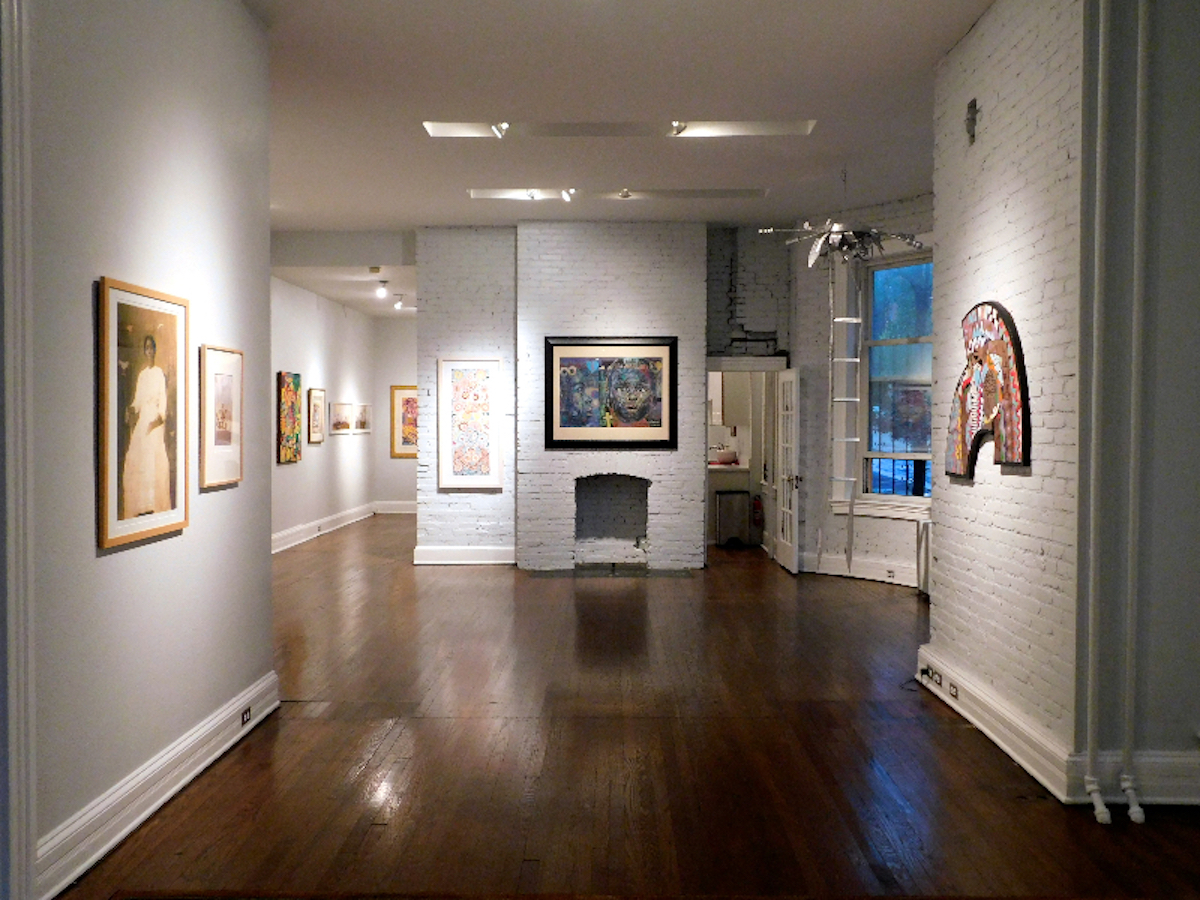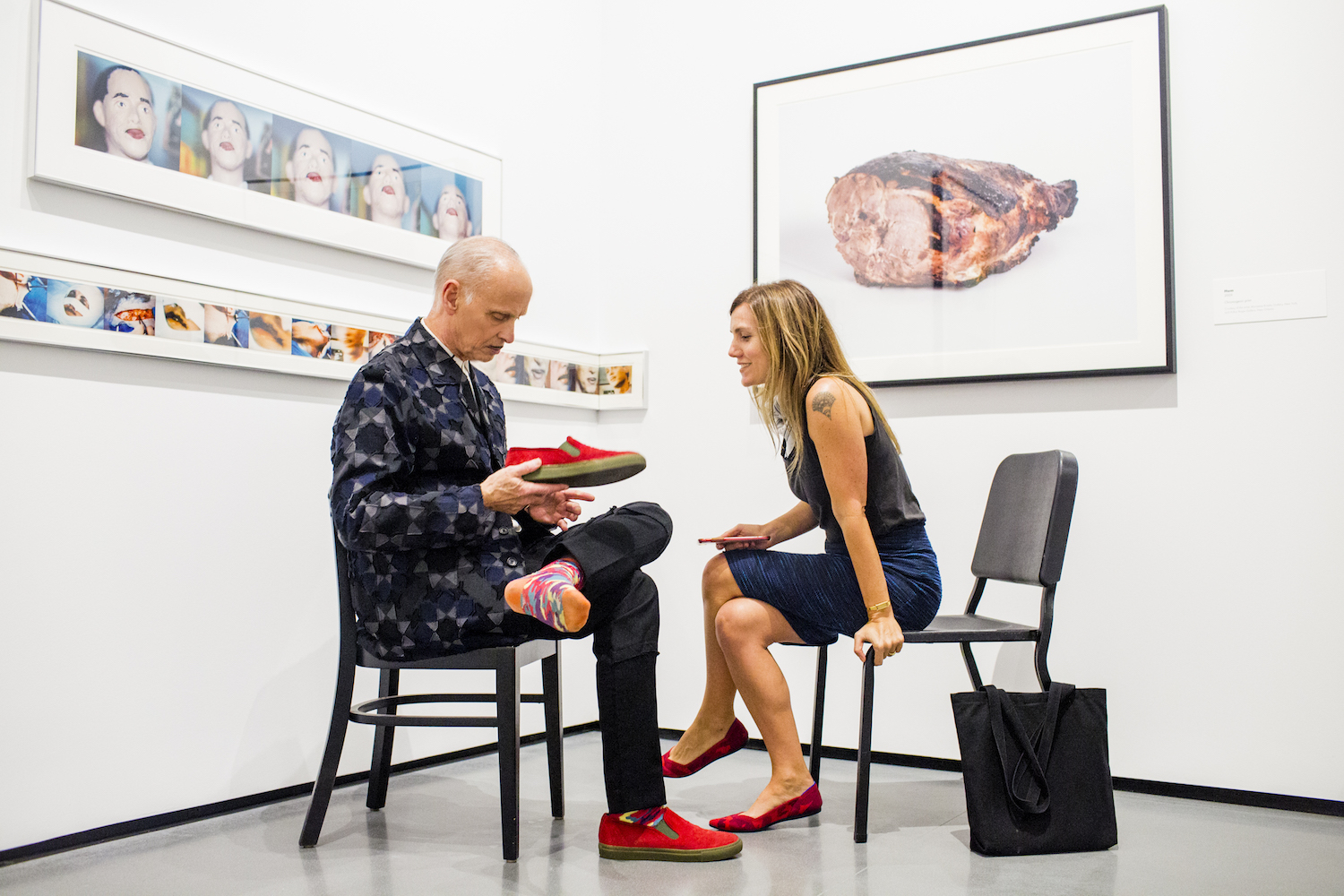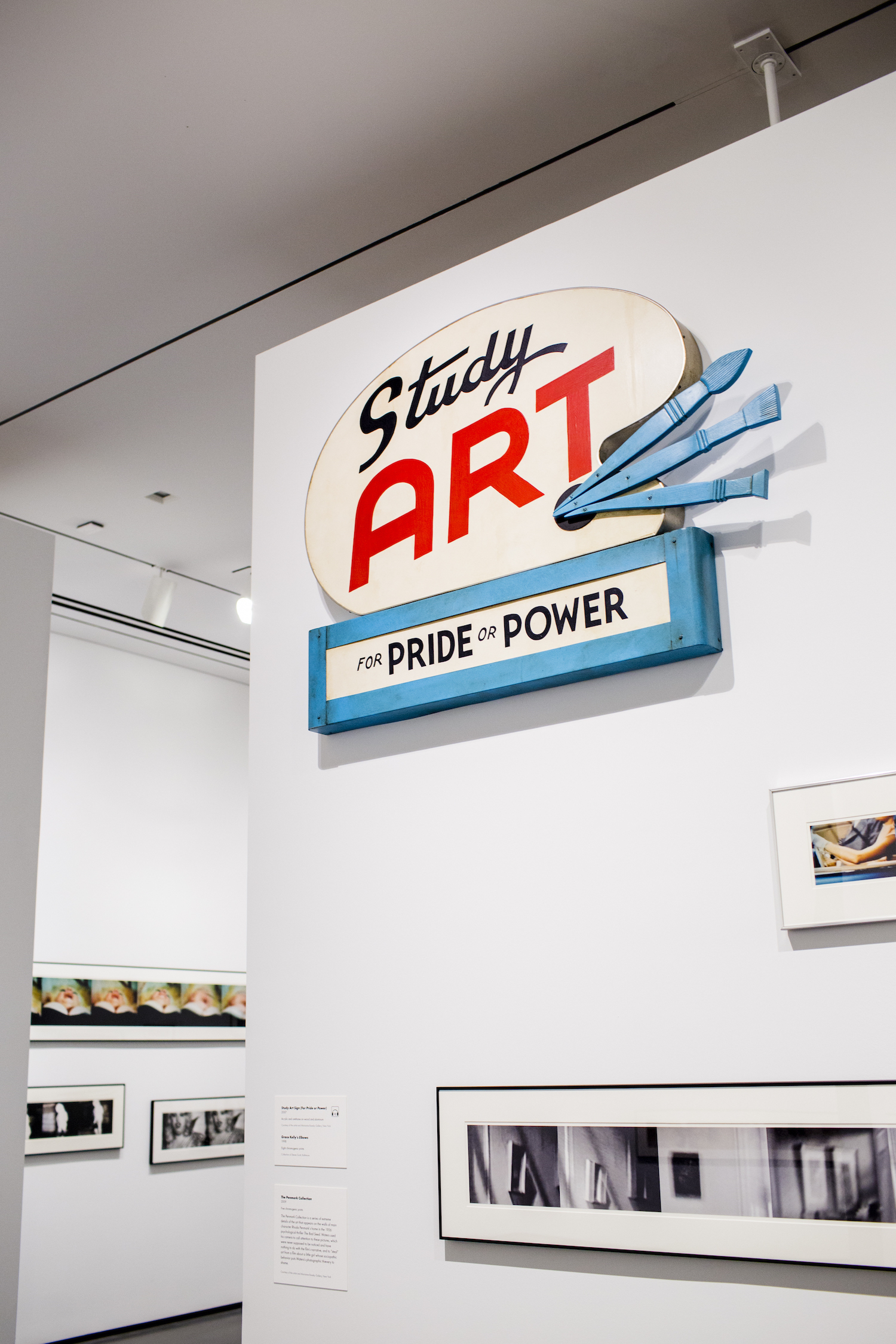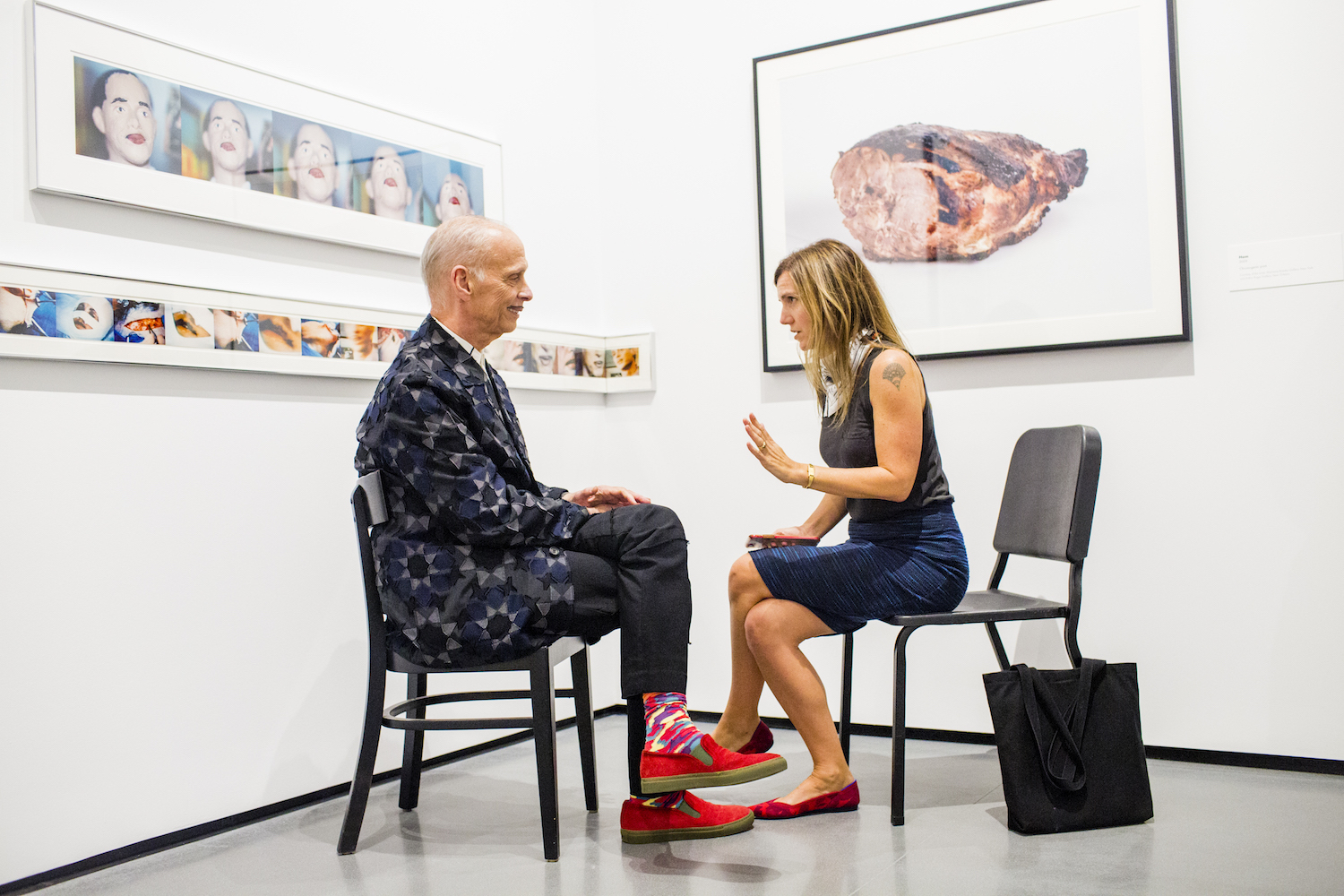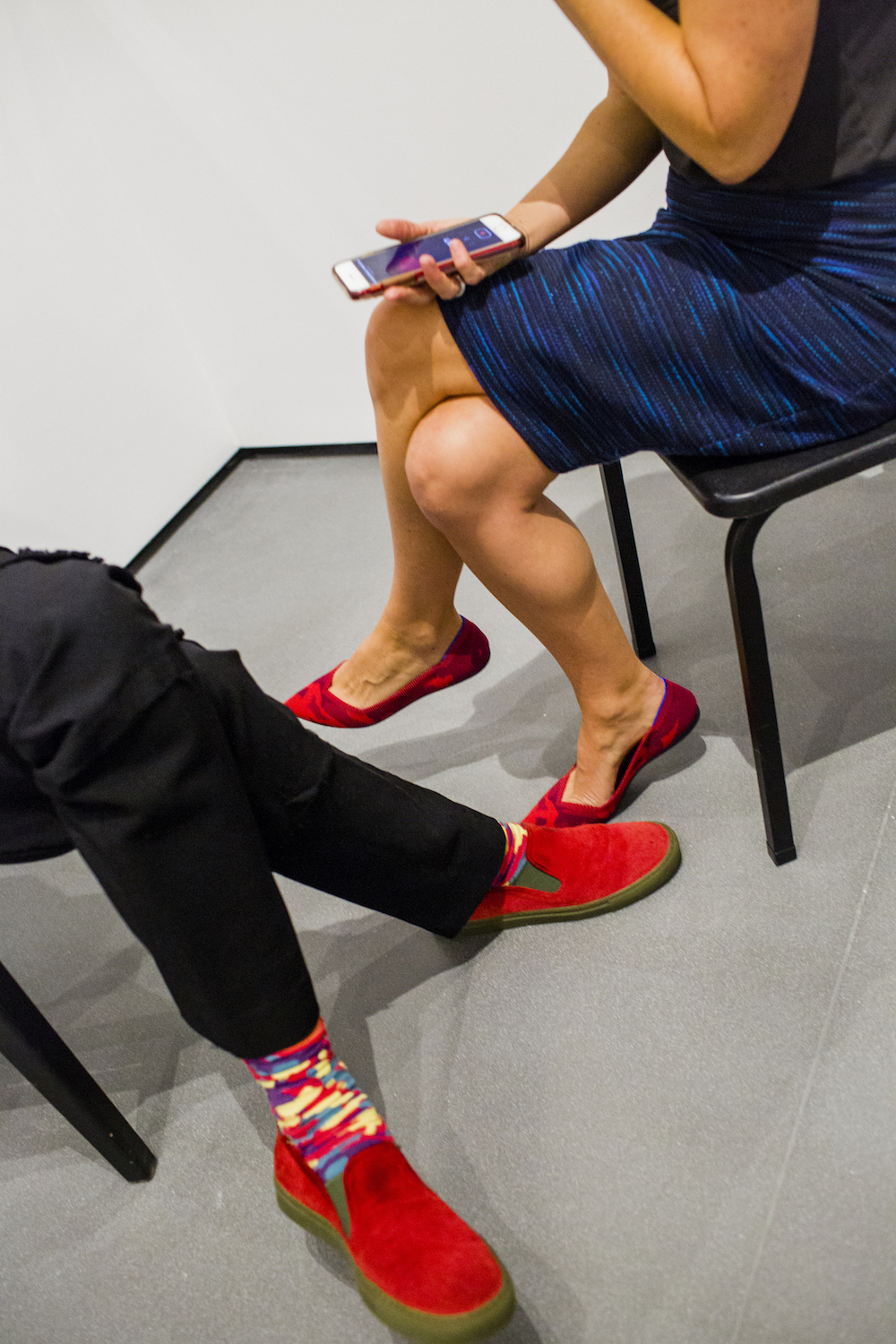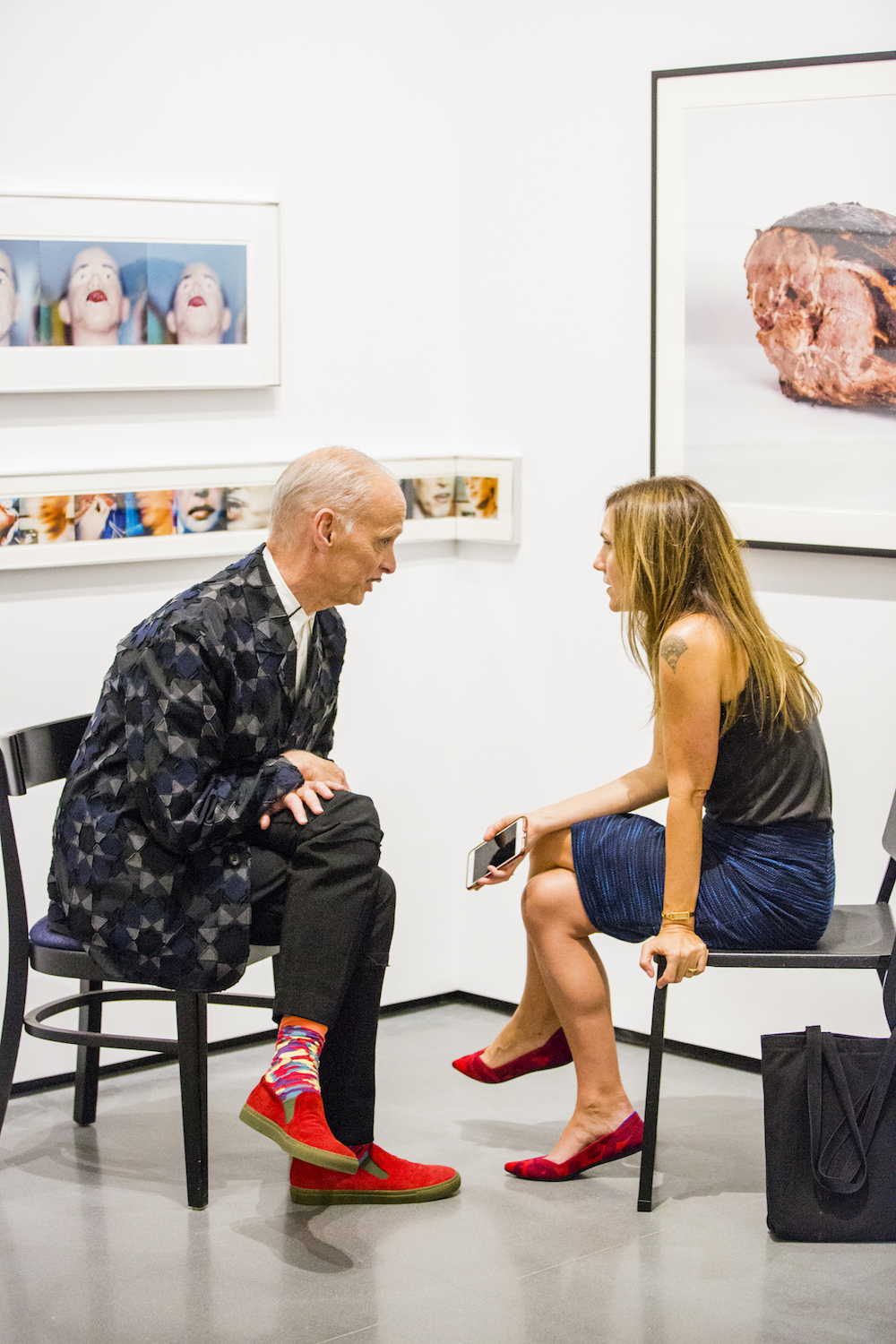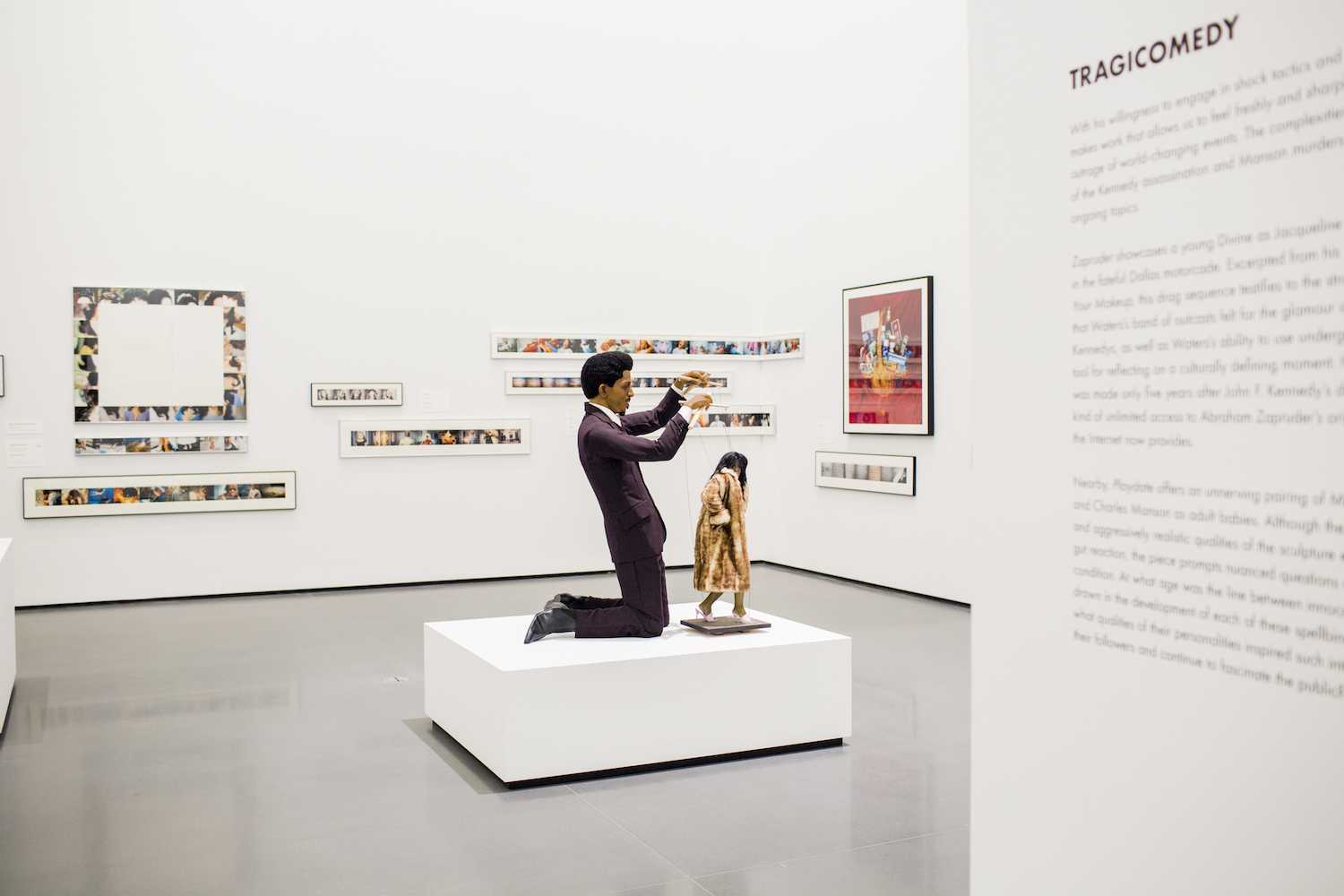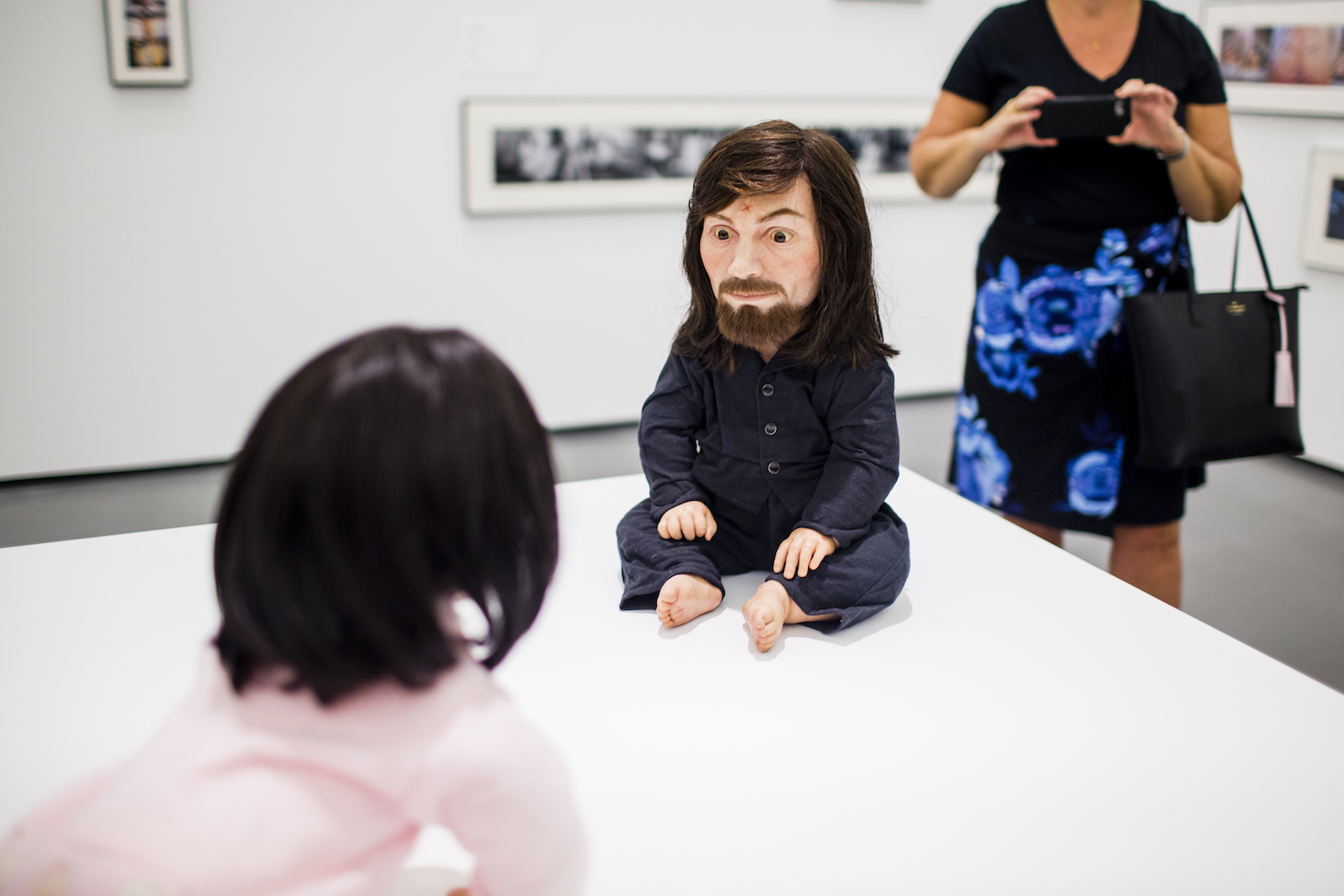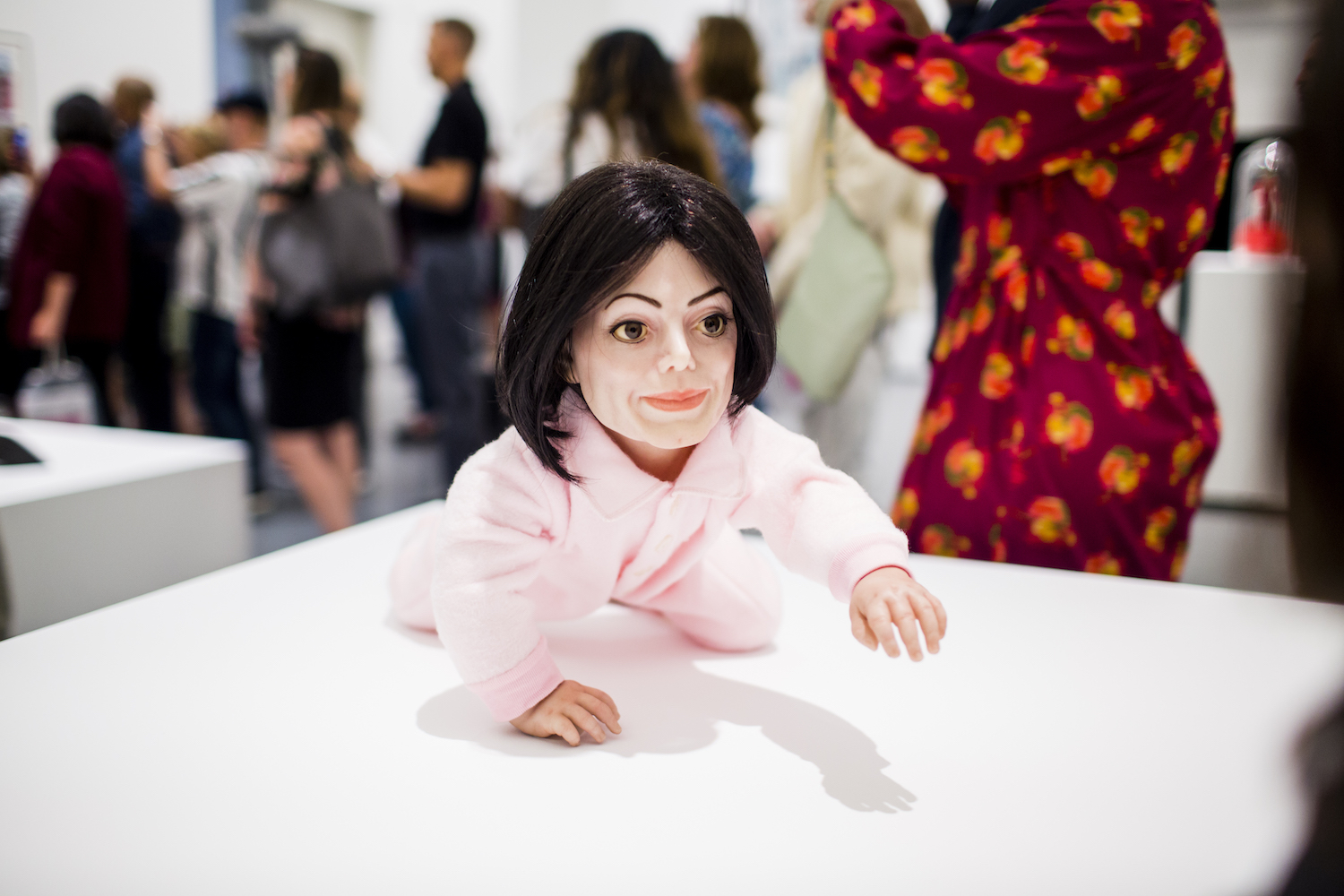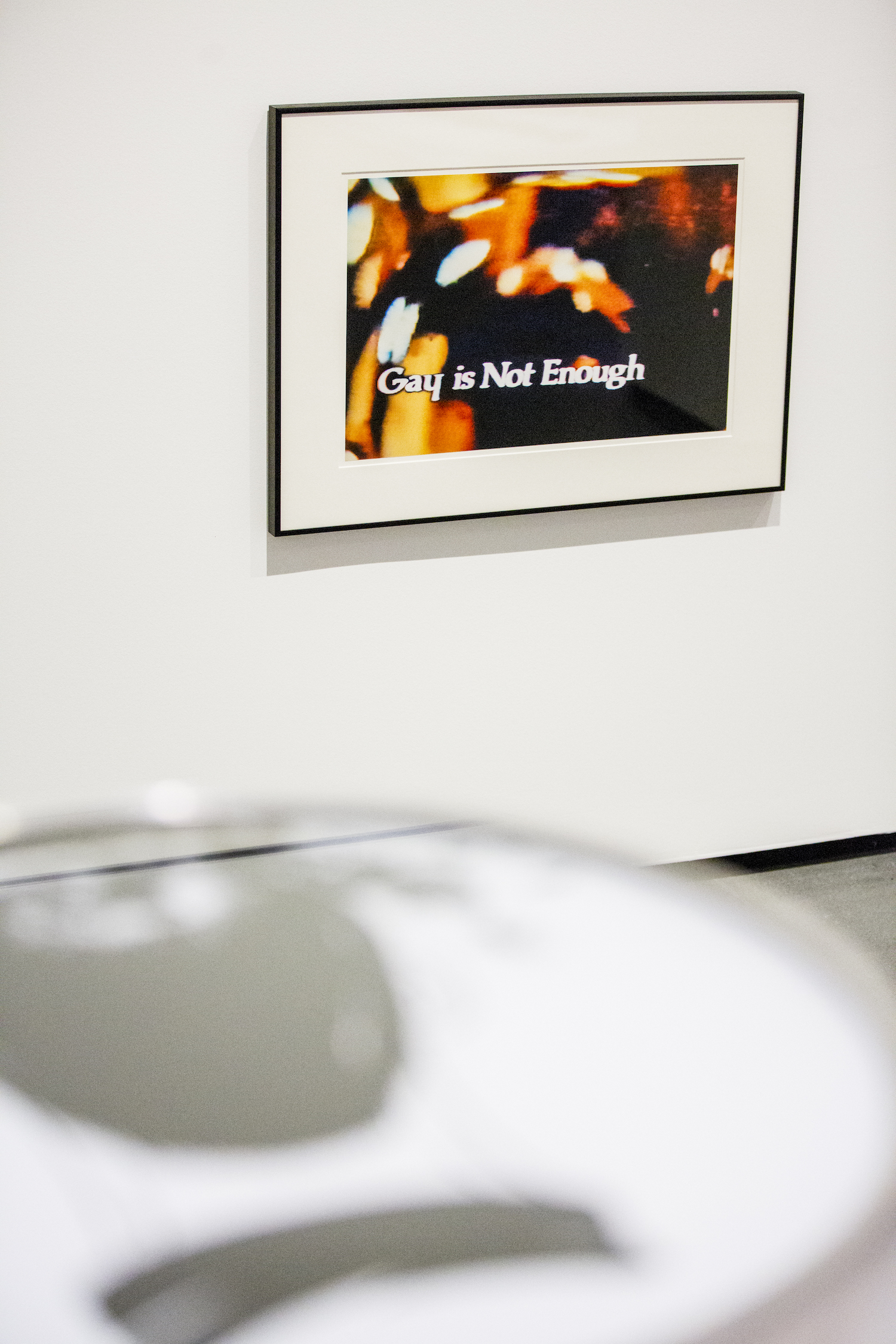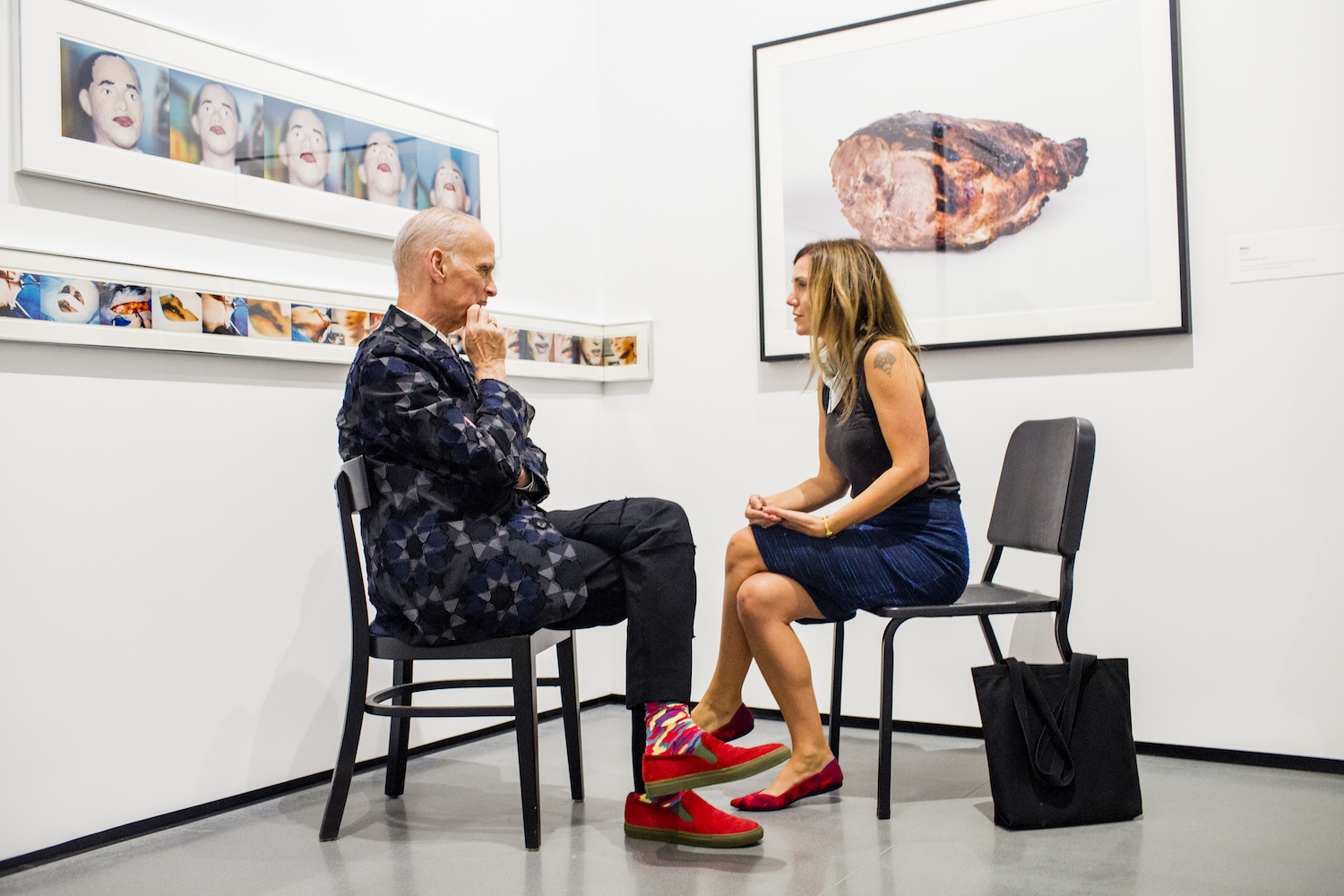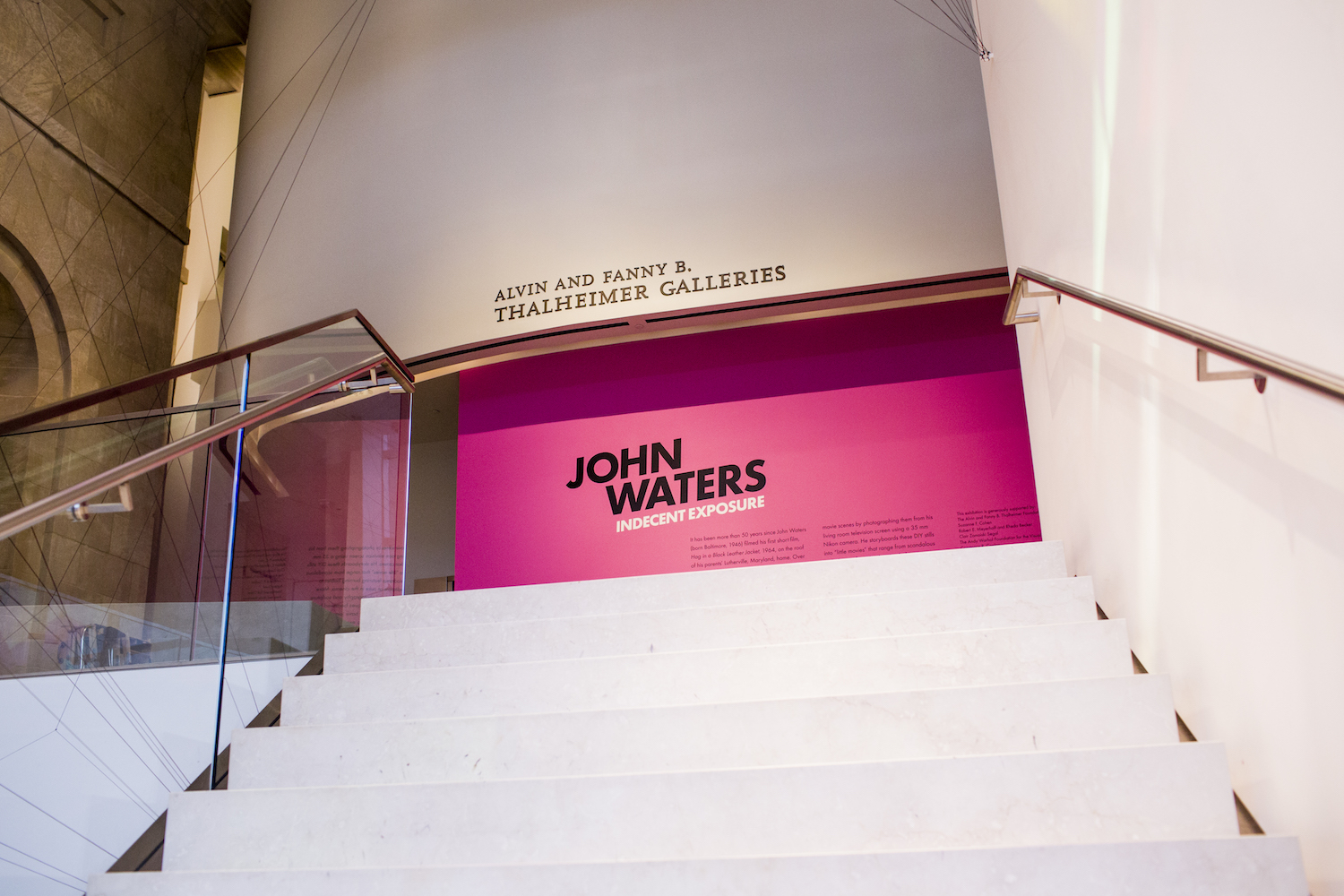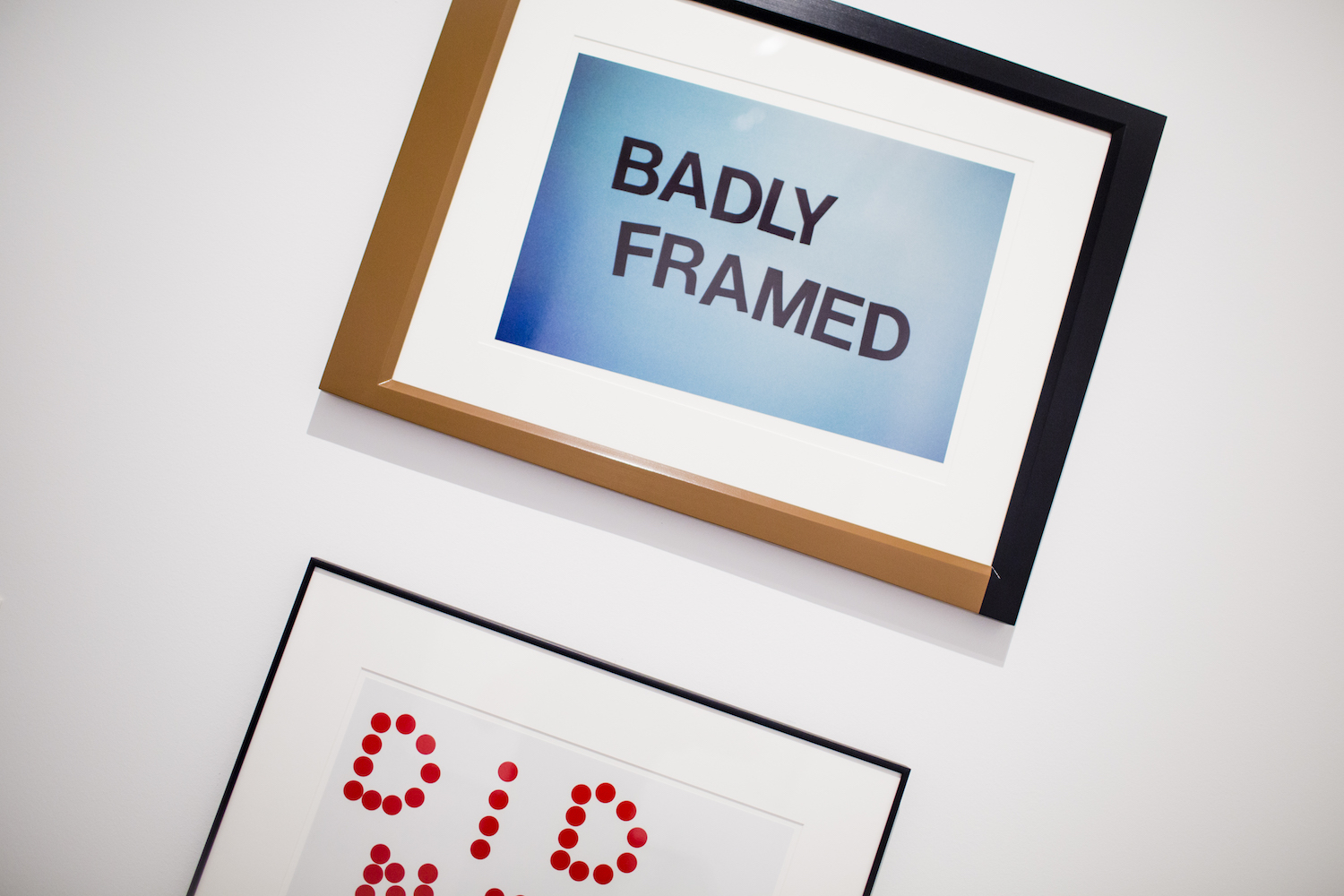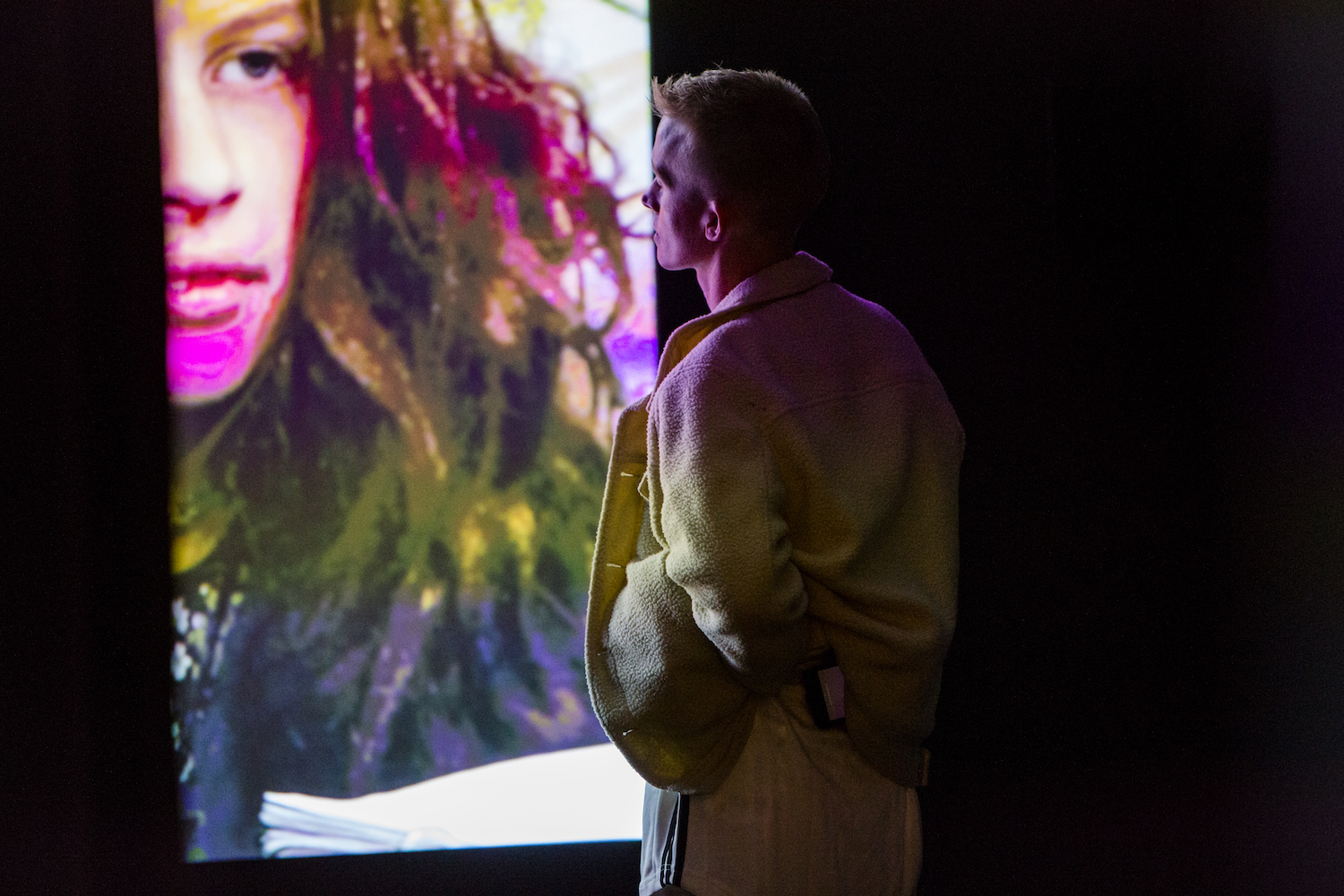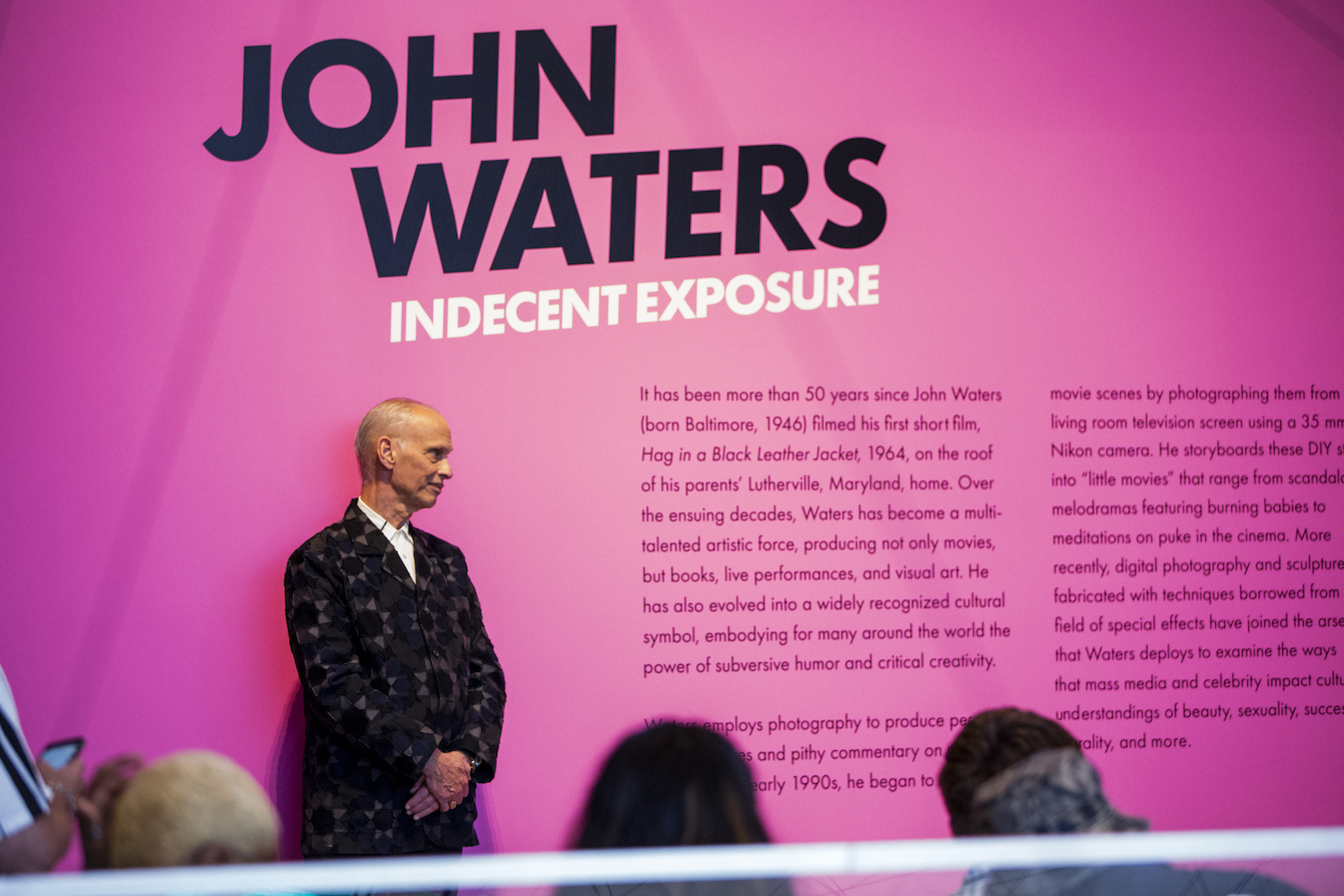“I think heterosexuals can be great artists, but they make lousy florists,” says John Waters at the Baltimore Museum of Art where his new retrospective, Indecent Exposure, is now on display. He is referring to one work in particular, “Hetero Flower Shop,” 2009, a grid of eight of the lamest floral arrangements imaginable on pastel backgrounds, a winning visual indictment of hetero-normative taste.
His voice sounds like snakeskin leather cushioned with a Baltimore towny twang. This charming lilt renders him approachable and allows his native city to continue to claim him, despite a fame that is global. At 72, Waters is the consummate performer, artist, and celebrity he established in the 70s with edgy films like Pink Flamingos and Female Trouble that still have the power to delight and make us uncomfortable watching in the company of our parents.
Walking around the gallery with him is entertaining in itself, of course; he speaks in rapid fire standup mode, sharing caustic and self-depreciating anecdotes without missing a beat.

